Churches have many paintings. They tell stories from the Bible and some do it better than others. The subject of a painting was given, until the end of the 19th century, content was limited to figures, landscapes and still-lifes. With the emergence of Modernism in the 20th century, artists began to choose their own content; the concept of the work became an integral part of the art and the artist now is free to choose it. What one does is as important as how one does it.
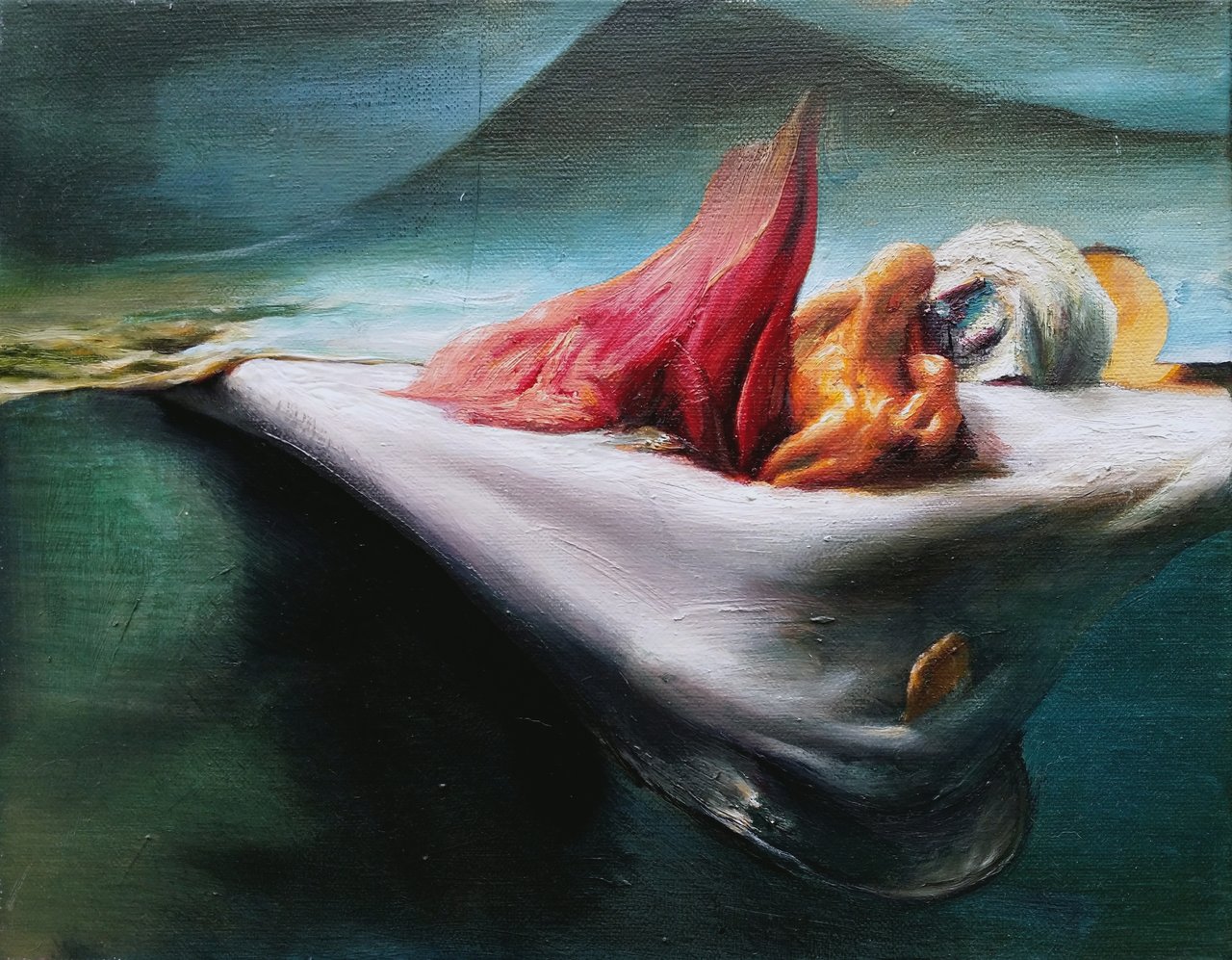 Jae-hong Ahn, Golem, 2014, oil on canvas, 30.5 x 23.5 cm. Courtesy of Articsok Gallery.
Jae-hong Ahn, Golem, 2014, oil on canvas, 30.5 x 23.5 cm. Courtesy of Articsok Gallery.
After growing up and being educated in South Korea. Jae-hong Ahn came to Canada at the age of 16 and later graduated from OCAD University. While tracing back the origin of his fascination towards the notion of division and separation, he visited South Korea and recognized that he needed more than a place of nostalgia and personal history. In 2011 Jae Ahn left for Leipzig, Germany, in order to be close to the painters he admired, the so-called New Leipzig School. This is a style born of the need of the East Germans to assert themselves in an atmosphere of victory and takeover by the West after the re-unification. It draws heavily on the traditional concepts of German painting: strong contrast of light and dark, precise linear drawing, complicated composition and dramatic emotional emphasis. Good examples for this method are the works of Dürer, Grünewald and Cranach up to Beckmann and Otto Dix. Jae Ahn has assimilated these influences as well as those of a more recent generation.
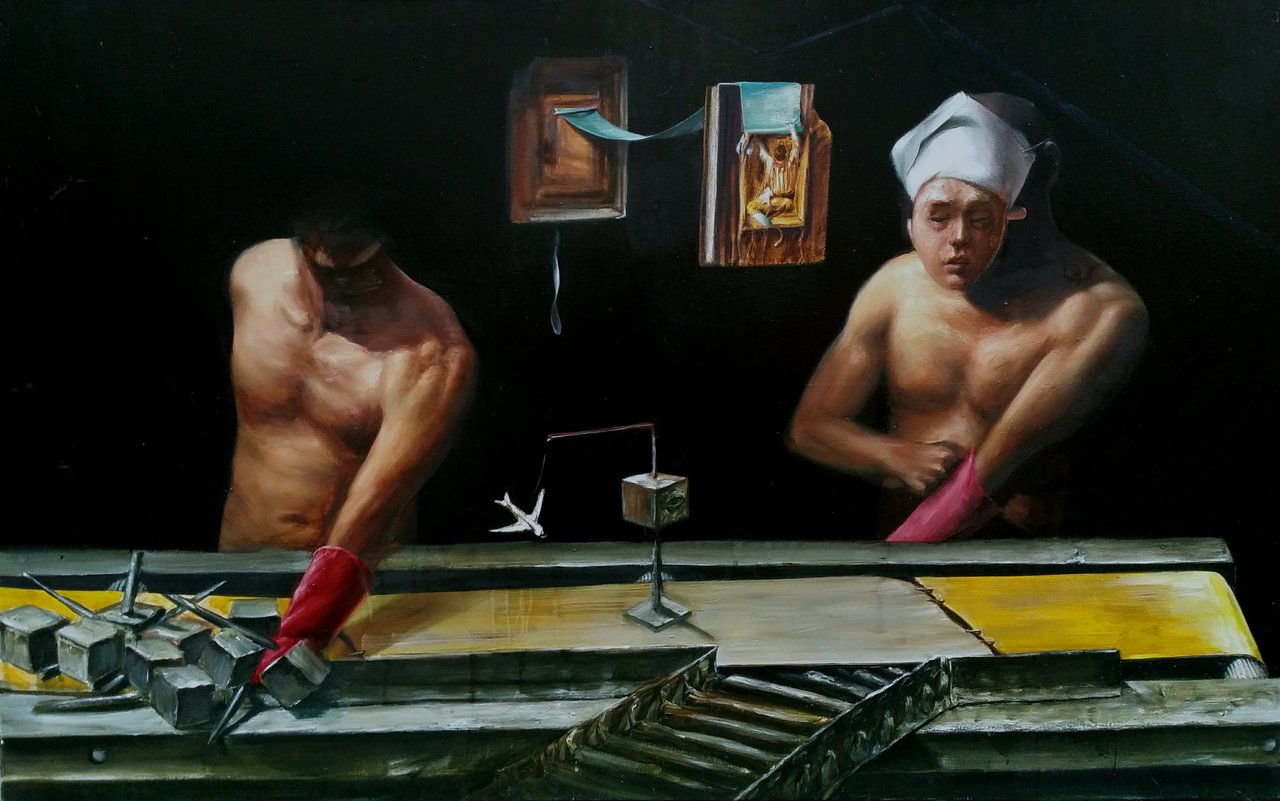 Jae-hong Ahn, To Settle The Score, 2012-14, oil on canvas, 159 x 99 cm. Courtesy of Articsok Gallery.
Jae-hong Ahn, To Settle The Score, 2012-14, oil on canvas, 159 x 99 cm. Courtesy of Articsok Gallery.
With his painting The Buglers, the two roof areas at the top where a man and a woman move in opposite directions out of a spiraling form set the tone of action that is risky and could end up badly. The red compliments the light and lime greens that emerge from the dark umbers. The content is set as much by Ahn’s use and choice of colour as by the theatrical scene of the painting. In Privileged Infidelity the diagonal is used to a great effect, emphasized by light tones and earth colours on a dark ground. The cart makes a strong diagonal movement made even stronger by the diamond shape above and off centre, which is dominant but takes its place within the totality of the work. The Junction’s, the emerald green lion on white arrests the eye and guide it to focus on what the animal is looking at. This time the lower half sets the tone and we are lead to contemplate what is above. The Drain makes its point directly with silver greys inside of both the lighted and shaded area of the painting’s subtle modelling. Then in the right there is a tiny patch of yellow and white – but of course it is a figure.
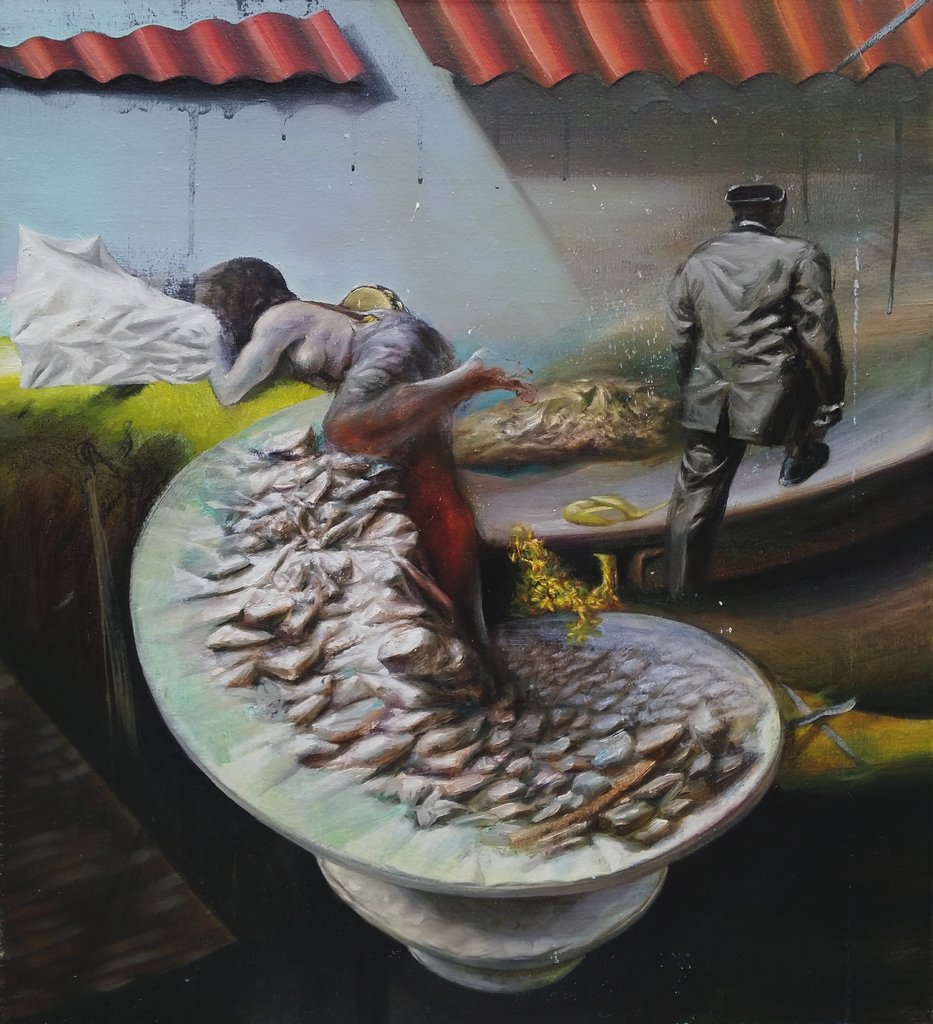 Jae-hong Ahn, The Buglers, 2014, oil on canvas, 54.5 x 60 cm. Courtesy of Articsok Gallery.
Jae-hong Ahn, The Buglers, 2014, oil on canvas, 54.5 x 60 cm. Courtesy of Articsok Gallery.
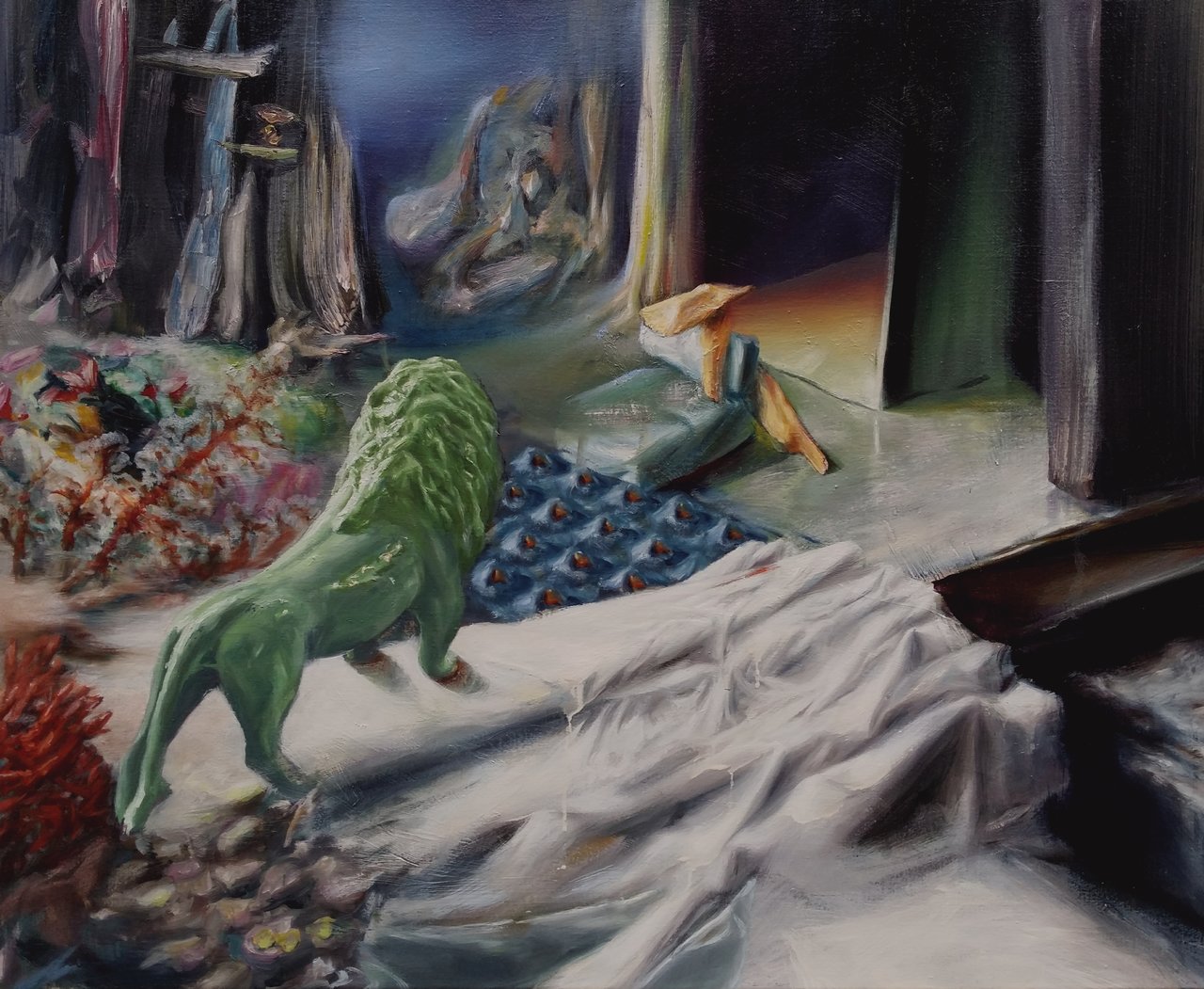 Jae-hong Ahn, Junction, 2014, oil on canvas, 72.5 x 59.5 cm. Courtesy of Articsok Gallery.
Jae-hong Ahn, Junction, 2014, oil on canvas, 72.5 x 59.5 cm. Courtesy of Articsok Gallery.
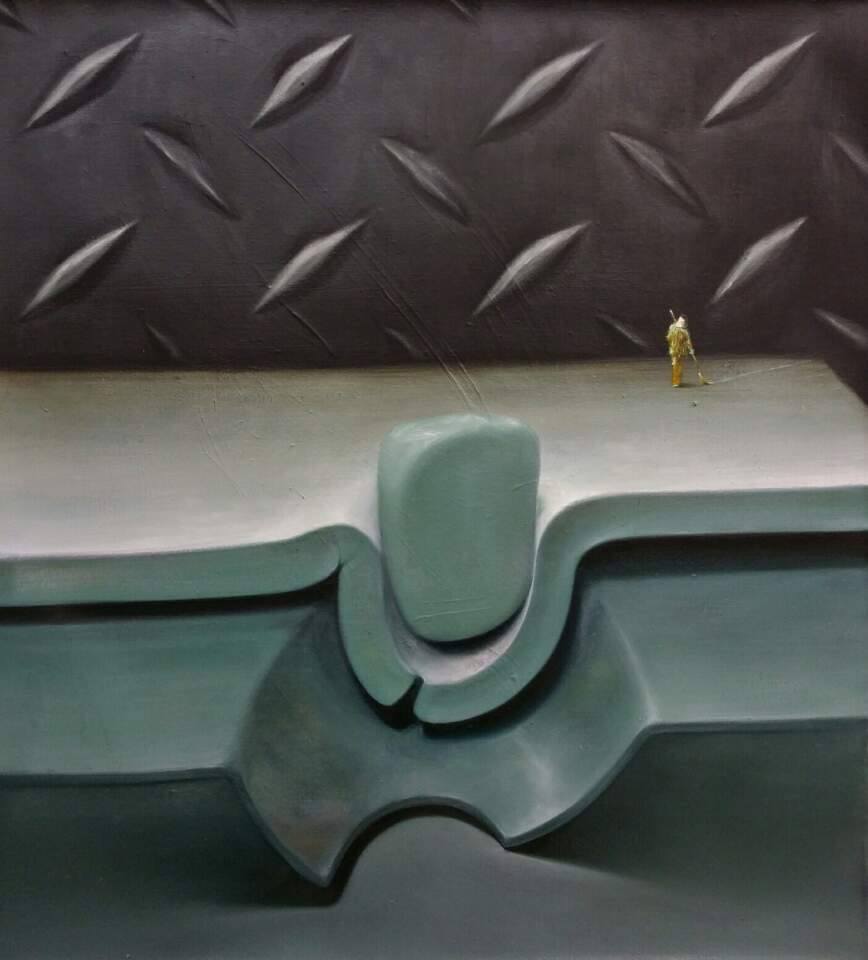 Jae-hong Ahn, Drain, 2013, oil on canvas, 55 x 60 cm. Courtesy of Articsok Gallery.
Jae-hong Ahn, Drain, 2013, oil on canvas, 55 x 60 cm. Courtesy of Articsok Gallery.
Ahn invites the viewers to interpret these paintings according to one’s own feelings. The meaning is deliberately vague as are the titles. As Ahn outlines in his artist statement, “My earlier fascination with figuration and empty interiors with traces of human presence have evolved with a gradual emergence of the themes related to the idea of division. Currently working in Germany, [a place that is widely perceived as having conquered separation and division], my goal is to create more methods and perspectives to observe this phenomenon, which have been ever so common throughout history.” What distinguishes Ahn’s work from his contemporaries is his desire to communicate through figurative painting. It is a language and a method of making art often described these days as being out of touch, too traditional and lagging behind new media. Yet it continues the superiority of painting in our flip culture as if to challenge the new media.
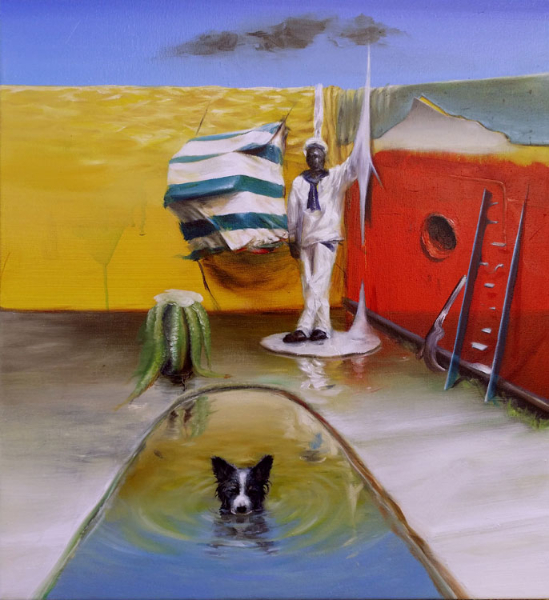 Jae-hong Ahn, Di Domenica, 2014, oil on canvas, 54.5 x 60 cm. Courtesy of Articsok Gallery.
Jae-hong Ahn, Di Domenica, 2014, oil on canvas, 54.5 x 60 cm. Courtesy of Articsok Gallery.
Jae Ahn is rising to this challenge. He presents us with not only ponderous works of art but art which is unexpected and, above all, with aesthetic surprises. They could be the contemporary replacement of the old glass windows of churches in telling stories of separation and division.
Prof. David Evison, Universität der Künste Berlin
*Exhibition information: November 13 – December 13, 2014, Articsók Gallery, 1697 St. Clair Avenue West, Toronto. Gallery hours: Wed – Sat, 12 – 6 p.m.
